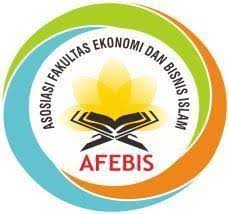East Java Government Instagram Content Analysis: Unpacking the Relationship Between Content Types and Public Engagement in 2023
Abstract
This study analyzes the online interactions of government Instagram accounts in East Java, Indonesia, focusing on the effectiveness of different content types on this social media platform. Digital platforms, particularly social media, have become crucial for government performance measurement and public interaction. Governments in Indonesia use social media, specifically Instagram, to disseminate information, socialize organizational performance, and channel public aspirations.
The research involved collecting data from 37 government Instagram accounts in East Java for the year 2023 using the Virol application. The study reviews the literature on digital platforms and social media in governance, highlighting the preference for visual content among followers and the importance of information quality in building citizen trust. The study also notes the positive impact of social media utilization on public satisfaction with government institutions.
Data reveal that album posts are the most frequent (average of 1613.78 posts), followed by images (1121.57), videos (241.03), and IGTV (147.68). In terms of engagement, album posts received the highest average likes (219.6), while IGTV received the most comments (4.6 on average).
The findings suggest that followers prefer album posts and that IGTV content generates more in-depth discussions. The study recommends that government social media strategies prioritize album posts for broader engagement and use IGTV for more detailed content that encourages public discussion.
This research contributes to understanding the dynamics of government-public interaction through Instagram and provides actionable insights for enhancing digital communication strategies.
Keywords
Full Text:
PDFReferences
Mergel, I. (2013, October 1). A framework for interpreting social media interactions in the public sector. Elsevier BV, 30(4), 327-334. https://doi.org/10.1016/j.giq.2013.05.015
Kusumasari, B. (2018, January 1). Digital democracy and public administration reform in Indonesia. Inderscience Publishers, 10(3), 317-317. https://doi.org/10.1504/ijeg.2018.095937
Sulistya, A Q W., Sulistiyo, B B., Aditya, F., Aritonang, I D., Simangunsong, S A., Shihab, M R., & Warnars, H L H S. (2019, July 1). A Case Study of Indonesian Government Digital Transformation: Improving Public Service Quality through E-government Implementation. https://doi.org/10.1109/icst47872.2019.9166234
Syamsiar, S. (2023, August 3). The Role of Digitalization in Enhancing Public Service Effectiveness in Indonesia. State University of Makassar, 13(1), 465-465. https://doi.org/10.26858/jiap.v13i1.51026
Rachman, F F., Nooraeni, R., & Yuliana, L. (2021, January 1). Public Opinion of Transportation integrated (Jak Lingko), in DKI Jakarta, Indonesia. Elsevier BV, 179, 696-703. https://doi.org/10.1016/j.procs.2021.01.057
Haro-de-Rosario, A., Sáez-Martín, A., & del Carmen Caba-Pérez, M. (2018). Using social media to enhance citizen engagement with local government: Twitter or Facebook?. New media & society, 20(1), 29-49.
Aji, G. G., Widodo, S., Aji, G. N., Aji, G. G., & Prawitasari, D. (2023). Building Trust in The Digital Age: How HRM and Cybersecurity Collaborate for Effective Stakeholder Relations. Management Analysis Journal, 12(2), 254-260.
Angendari, D A D. (2022, June 18). A Picture Speaks a Thousand Words: Crisis Communication and Image Making of Indonesian Public Leaders on Instagram. , 7(1), 152-164. https://doi.org/10.25008/jkiski.v7i1.594
Peng, Y. (2020, October 13). What Makes Politicians’ Instagram Posts Popular? Analyzing Social Media Strategies of Candidates and Office Holders with Computer Vision. SAGE Publishing, 26(1), 143-166. https://doi.org/10.1177/1940161220964769
Khasawneh, R T., & Abu-Shanab, E. (2013, July 1). E-Government and Social Media Sites: The Role and Impact. , 1(1), 10-17. https://doi.org/10.13189/wjcat.2013.010103
Santoso, A. D., Rinjany, D., & Bafadhal, O. M. (2020). Social media and local government in indonesia: Adoption, use and stakeholder engagement. Romanian Journal of Communication and Public Relations, 22(3), 21-35.
Aji, G., Sukma, A., & Pramadanti, A. D. (2022). The Collaboration Of TOE Framework And Vocational Faculty Unair’ Support Social Media Management Team. UPY Business and Management Journal (UMBJ), 1(2), 19-26.
Khan, S., Umer, R., Umer, S., & Naqvi, S. (2021). Antecedents of trust in using social media for E-government services: An empirical study in Pakistan. Technology in Society, 64, 101400.
Poluan, M. S., Pasuhuk, L. S., & Mandagi, D. W. (2022). The role of social media marketing in local government institution to enhance public atitude and satisfaction. Jurnal Ekonomi, 11(03), 1268-1279.
Sandoval-Almazan, R., & Valle-Cruz, D. (2021). Social media use in government health agencies: The COVID-19 impact. Information Polity, 26(4), 459-475.
Islam, J., & Rahman, Z. (2016). The transpiring journey of customer engagement research in marketing. Management Decision, 54, 2008-2034. https://doi.org/10.1108/MD-01-2016-0028.
Guo, H. (2021). Research on Web Data Mining Based on Topic Crawler. J. Web Eng., 20, 1131-1144. https://doi.org/10.13052/jwe1540-9589.20411.
Nemeslaki, A., & Pocsarovszky, K. (2012). Supporting e-business research with web crawler methodology. Society and Economy, 34, 13-28. https://doi.org/10.1556/SOCEC.2011.0007.
Zavyalova, A. (2022). content analysis. The Fairchild Books Dictionary of Fashion. https://doi.org/10.4135/9781412961288.n73.
Vespestad, M., & Clancy, A. (2020). Exploring the use of content analysis methodology in consumer research. Journal of Retailing and Consumer Services, 102427. https://doi.org/10.1016/j.jretconser.2020.102427.
DOI: http://dx.doi.org/10.24042/revenue.v5i2.23712
Refbacks
- There are currently no refbacks.
Manajemen Bisnis Syariah UIN Raden Intan Lampung







